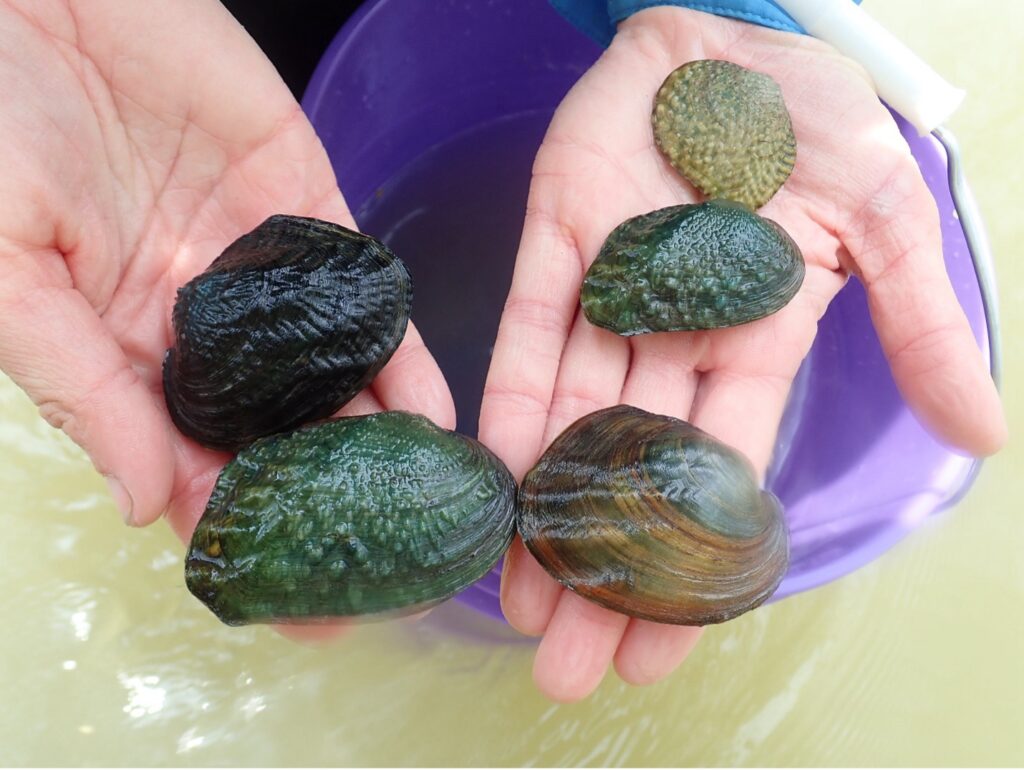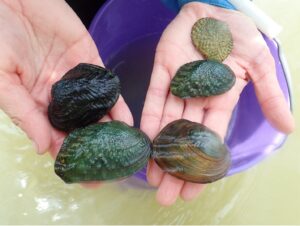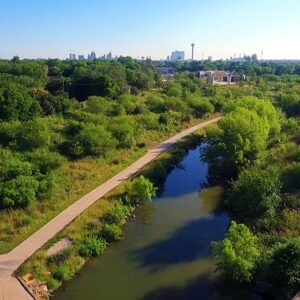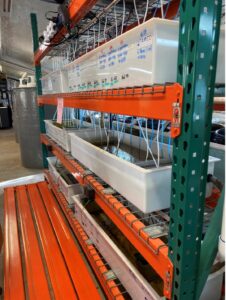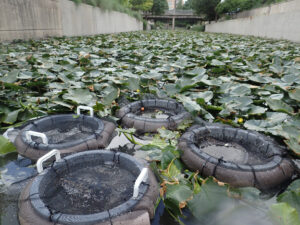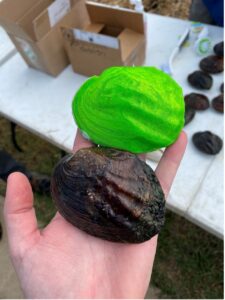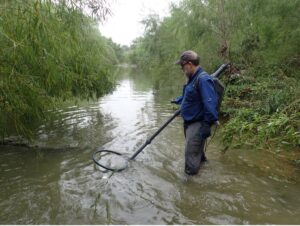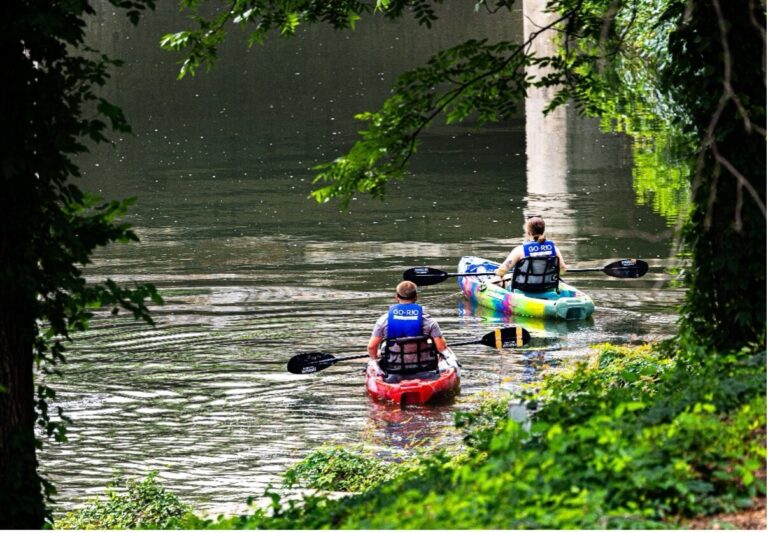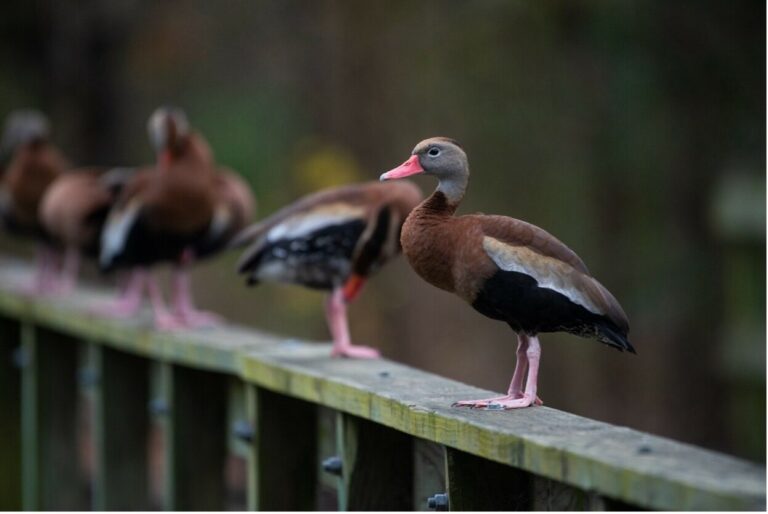Last Updated on March 20, 2024
San Antonio River Authority (River Authority) environmental scientists have been working since 2017 to bring native freshwater mussels back to the upper reaches of the San Antonio River, beginning with the recently restored Mission Reach. In short, native freshwater mussels are essential to have in our rivers because they provide many excellent ecosystem services, including cleaning the water and giving stability to the river’s bed.
A few of the many cool and colorful freshwater mussel species found in the San Antonio River.
There are many indicators that the Mission Reach Ecosystem Restoration, completed in 2013, has positively impacted the water quality and ecology of the San Antonio River, improving its ability to sustain these sensitive organisms. Please read our past blog posts on this project for some additional background on freshwater mussels, why we love them, and to catch up on what our scientists have been up to over the last several years of this journey.
We are excited to announce that the feasibility study is in its final stages, which includes exploring alternative strategies for growing baby mussels to put into the river, finalizing a model that will tell scientists exactly where to put the baby mussels, and developing methods for measuring success. Read along as we discuss these crucial final steps.
A restored Mission Reach means a healthier riparian zone, increased habitat diversity, and improved water quality — all crucial needs for freshwater mussels!
ALTERNATIVE GROW-OUT
The mussels in this project were all grown in a lab. As with any wild animal, the ability of a mussel to survive in its natural habitat is hindered by being raised in a sterile lab system. Therefore, scientists must remove these animals from their lab setting and expose them to wild conditions at just the right time. Keep them in the lab setting for too long, and they may not be able to adjust to living in the wild; remove them too quickly, and they’re too young to be put straight into the wild. River Authority scientists have been working to determine the perfect balance of lab time before removing them from the cozy lab and exposing them to the elements of the San Antonio River.
Mussel rearing system. Juvenile mussels are kept in small, heated tanks and put on a strict diet. They are kept in this system until they are large enough to move into the San Antonio River.
The goal is to reintroduce mussels after they grow to about 20 millimeters in length- the width of an average human adult’s finger. Floating baskets are the perfect way for the mussels to grow to this length in a semi-controlled, wild environment. To imagine what these floating baskets look like, think about your laundry basket at home. Now, throw some floats on the side, fill it with sand, and put your baby mussels inside. Bingo! Floating basket!
Floating baskets suspended in the San Antonio River. Wild waters provide a more diverse diet, ultimately allowing the juveniles to grow more resilient to adverse environmental conditions.
Scientists suspend the mussels above wild sediments, making it easier to track their survival and growth over time. Mussels naturally grow faster in these wild systems because of the quantity and diversity of food in natural river water versus lab water (think eating only salad your whole life versus an all-you-can-eat buffet!) The rate at which these mussels grow in the baskets is essential information because it allows scientists to forecast how long it takes before reintroducing them into the San Antonio River.
HABITAT SUITABILITY
One of the biggest challenges with urban systems like the San Antonio River is that impervious cover, like streets and sidewalks, causes water velocity to rapidly increase when it rains. These high flows are especially dangerous because they displace and transport sediments from the riverbed, which is precisely where these freshwater mussels live. However, some areas are more prone to sediment displacement than others, and when sediment is displaced, so are mussels. River Authority scientists have been working with partners like the Texas Parks & Wildlife Department, Meadows Center for Water and the Environment, Utah State University, and the United States Army Corp of Engineers to create sediment maps of the Mission Reach and predict mussel movement based on a combination of sediment type, depth, and water velocity in specific areas. Scientists placed 3D-printed mussels into strategic locations across a wide variety of these areas and tracked their movement during various high-flow events.
An adult Threeridge, one of the four mussel species evaluated in this study, and a 3D-printed Threeridge(green) used in the habitat suitability study. They even weigh the same as their real-life counterparts!
The distance a mussel moved during a flow event can then be attributed to the habitat combination it occupied before that event. River Authority staff will put this information into a model that will serve as a blueprint for placing these mussels into the river. By knowing which areas are best suited for mussel survival, we can give them the best chance for success and ultimately have a healthier river.
A diagram showing particle movement. These are original and post-flow locations of 3D-printed mussels. We will assess the distance and direction of movement when building our habitat suitability model.
MEASURING SUCCESS
After mussels have been put into their new homes in the Mission Reach, scientists need to determine if they’re happy. By marking the mussels before putting them in the water, scientists can return later and find them again. The number of mussels they recapture and how far those mussels have moved since the last time they were seen help inform scientists whether that habitat is working as a suitable home. This technique is aptly called ‘Mark Recapture,’ and scientists worldwide use it to estimate the population size of all kinds of animals, from mussels to sea turtles and everything in between. Our ability to monitor success relative to reintroduction location will be critical in a system like the Mission Reach, allowing us to easily detect offspring produced naturally within the Mission Reach in the future.
A scientist from the Meadows Center for Water and the Environment scans the bottom of the river in search of tagged mussels.
While the feasibility stage of this project is concluding, the efforts involved with reintroducing freshwater mussels into the San Antonio River will continue well into the future. River Authority scientists will continue to work with partners to produce and stock juvenile mussels, refine methods, and monitor success. The past several years of research have positioned us to reincorporate this extraordinarily important group of organisms back into their rightful home. Their restored presence will have tremendous positive effects on overall stream health and will make for a cleaner, safer, and more enjoyable river. Stay tuned for more marvelous mussel news and updates on this important project improving the health of the San Antonio River!

